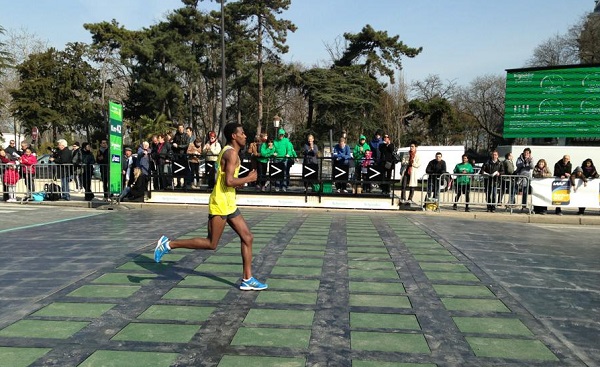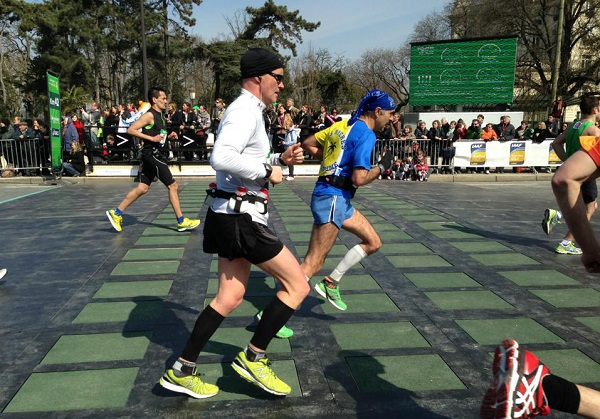Some 40,000 people pounded the pavement – and Pavegen Systems’ energy harvesting panels – on Sunday at the Paris Marathon.
Working with race sponsor Schneider Electric, London-based Pavegen installed 178 of its kinetic-energy capturing tiles on a 25-meter stretch of the 42.2-kilometer course – on the Champs-Élysées, in fact. There was, it appears, no avoiding them.

According to a Facebook post by Pavegen, if the panels managed to produce 7 kilowatt-hours of energy, the company would “donate 60k euros to an NGO.” As of several hours after the race, there was no word on whether that target was reached.
This isn’t the first time Pavegen has attached itself to a big sporting event, although last time it stayed on the sidelines. That was at the 2012 London Olympics, when 12 Pavegen panels were installed on a temporary footbridge set up at the West Ham station for visitors to the Olympic Park.

Pavegen says its tiles are made from “recycled lorry tires” and “recycled aluminum and other components.” The company says the tiles flex 5 millimeters when stepped on, and it’s this slight give that powers the system.
According to an Olympic Delivery Authority press release last summer, each footfall on the Pavegen tiles translates to 6 watts of energy, but that sounds like an average; a Bloomberg story about the Paris project said that “each footstep generates as much as 8 watts of kinetic energy, which is fed back to batteries that can charge display screen and electronic signs along the route.”
As we wrote in our previous story on the company, Pavegen is coy about the precise technology it uses. In an interview last year with the U.K. publication The Engineer, company founder Laurence Kemball-Cook said he and his team of a dozen engineers have come up with a “hybrid solution” that isn’t all about the piezoelectric effect, which takes advantage of the ability of certain materials to transform mechanical strain into an electric charge.
“Piezo relies on high spikes,” Kemball-Cook said in the interview. “We know the gap between those spikes makes it very hard to give a constant flow of energy. What our technology does is reduce those gaps and give you more of a constant flow of power.”
Cool as it is, how much of a difference any such system can make in the larger energy picture is certainly open to question. Every lit bit counts, but given that the average European household uses about 5,000 kWh of electricity in a year, the amount Pavegen was hoping to produce from 40,000 runners at Paris would power a single home for about half a day.